Surrounded by nations that attract adventurous souls in droves, Bolivia can often get overshadowed. The tide, however, is slowly changing just like the waters of the eye-catching Laguna Colorada.
Bolivia’s incredible biodiversity is at the forefront of reasons to visit. Sprawling deserts collide with the dense, lush beauty of the Amazon. Both are dwarfed by the intense heights of the Andes. Here, villages, lakes and even geysers combine to create an unforgettable experience above 4,000 meters.
Beyond the natural attractions in Bolivia, the pre-Columbian archaeology takes you on a journey as far back as the Bronze Age. But that’s just the beginning. The Incas take it from there. In addition, the Colonial era and a golden age of mining have created a living history in the many charming communities around the country.
With a diverse mix of things to do in Bolivia, traveler’s can expect a wealth of once-in-a-lifetime travel experiences.
17. Amboro National Park
Close to Santa Cruz, the Amboro National Park is another example of Bolivia’s remarkable biodiversity. Thanks to the ever-changing elevation a smorgasbord of habitats can be discovered here. These include the Bolivian Amazon, the Andes and the Gran Chaco. Behind the Amazon, the Gran Chaco is the second-largest forest in South America.
A great trail system can guide you through all three, often leading to mesmerizing waterfalls and some of the best birdwatching in the country. An organised adventure tour is necessary as a guide is required. But this will help not just to see the highlights, but to navigate wild landscapes, including river crossings.
16. Train Cemetery
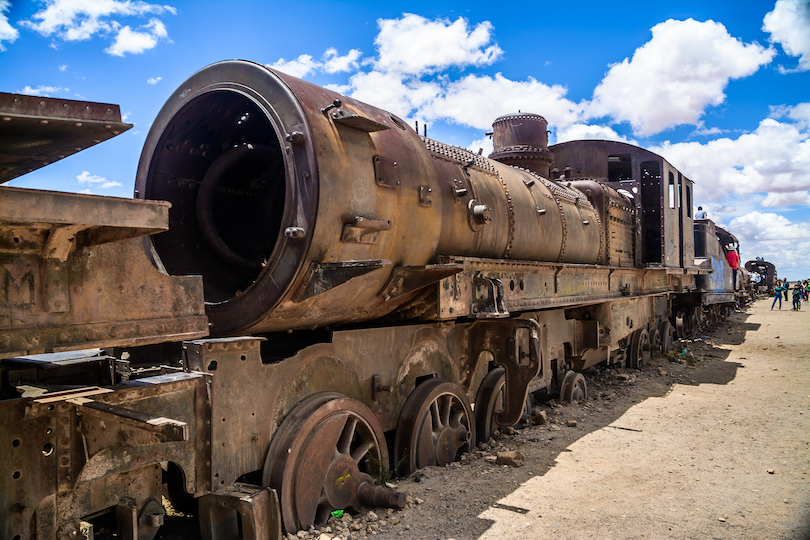
One of Bolivia’s best odd attractions, the Train Cemetery, is a ghostly, abnormal place. Near Uyuni, the Train Cemetery is the site of a handful of locomotives from the 1940s, abandoned in place.
Dusty winds and ample salt have all but covered these old trains, making them the same color as the surrounding desert. These trains aren’t protected either, so visitors can explore as they please.
You can search for open doors to venture into these old locomotives. Or find a ladder that will take you to the top. For artistically minded travelers, this is an amazing spot for photos.
Arrive early to experience this abandoned graveyard without the crowds.
15. Laguna Colorada
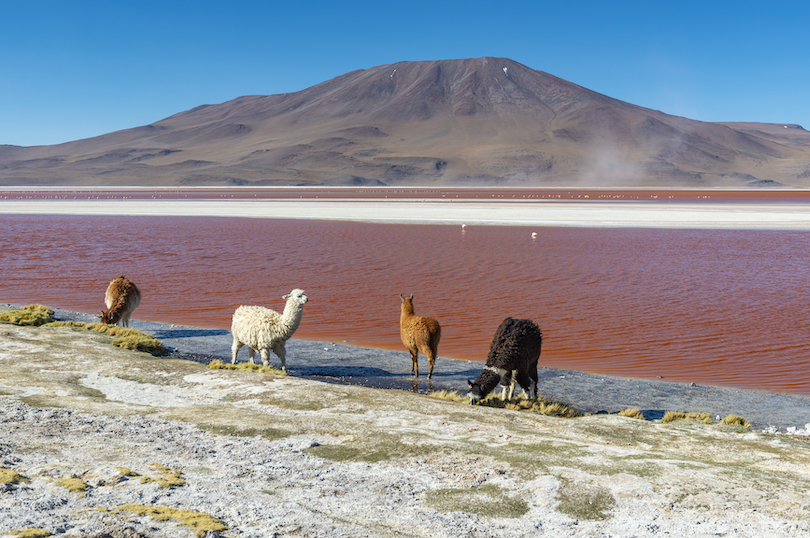
Inside the boundaries of Reserva Eduardo Avaroa, Laguna Colorada is a famed red lake (with a dash of blue and purple). Close to the border of Argentina and Chile, the lagoon is so rich in color you can barely see past the surface.
Sediments and algae help to create this phenomenon. Sun and shade can also create their own effects. Interrupting this sea of deep color are the borax bands that exist throughout. This salt compound can create patches of ivory white.
Equally as famous are the lake’s flamingos. Thousands can be found in the area. They’re remarkable creatures, resistant to the lagoon’s chemicals. At night, when the temps drop, they freeze themselves in the lake for protection. In the morning, the lake melts and they’re free to move about.
14. El Fuerte de Samaipata
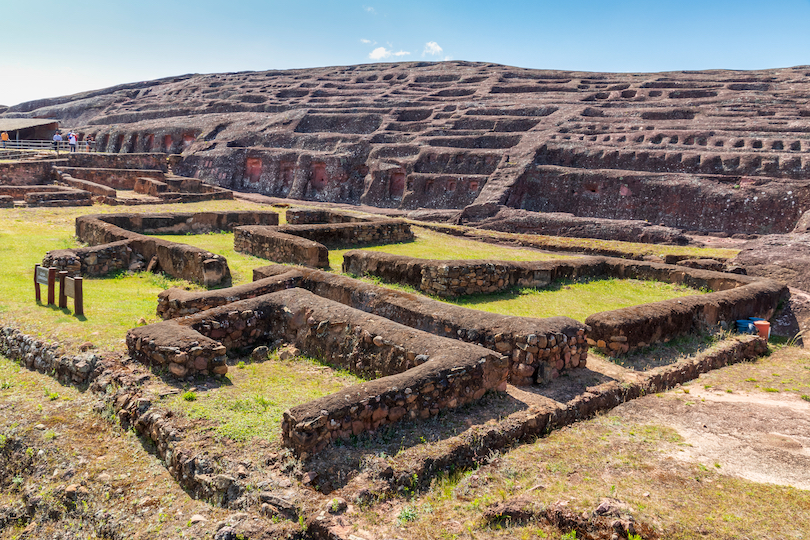
Your adventure to El Fuerte de Samaipata takes you to the foothills of the Bolivian Andes. A balance of pre-Columbian, Incan and Spanish history, these ruins leave more questions than answers.
Archeologists have been trying to get to the bottom of El Fuerte de Samaipata for years. Known as the Fortress, these ancient ruins, with intricate carvings, are enveloped in mystery. Some of the oldest creations are from over 2,000 years ago!
This layer of the unknown only serves to increase the beauty of this space. It overlooks the gorgeous valley, with panoramic views. As it’s a short trip from Samaipata, be sure to spend some time exploring this culturally rich town.
13. Chacaltaya Ski Resort
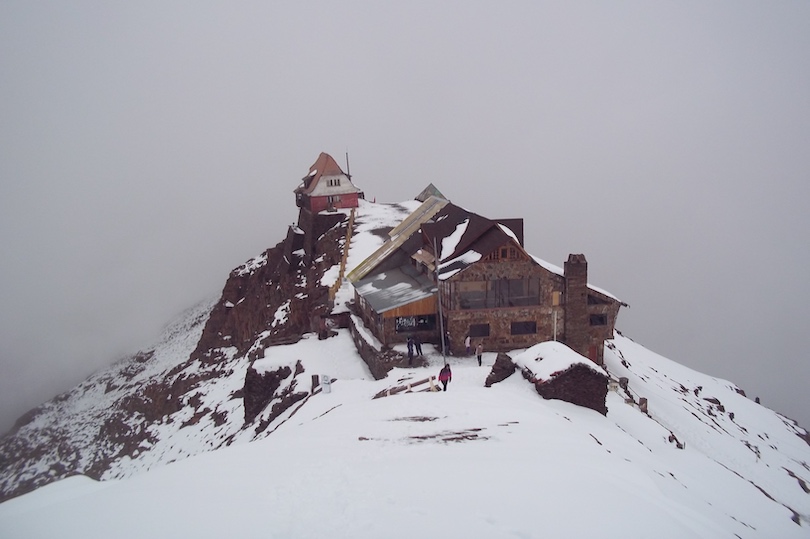
At an altitude of 5,375 meters, Chacaltaya Ski Resort is the highest on earth. Well, at least it was. The golden days of insane high alpine skiing are now in the rearview mirror.
High up in the Andes, 30 minutes from La Paz, Chacaltaya was beloved among locals. With just a single lift, it took skiers and snowboarders alike over a glacier with mind-boggling views at the peak.
Now, abandoned chalets, summit restaurants and the refugio are all that is left of this resort. The latter is still run by two brothers who help cook up some warm meals for the few travelers that make the journey.
12. Valley of the Moon
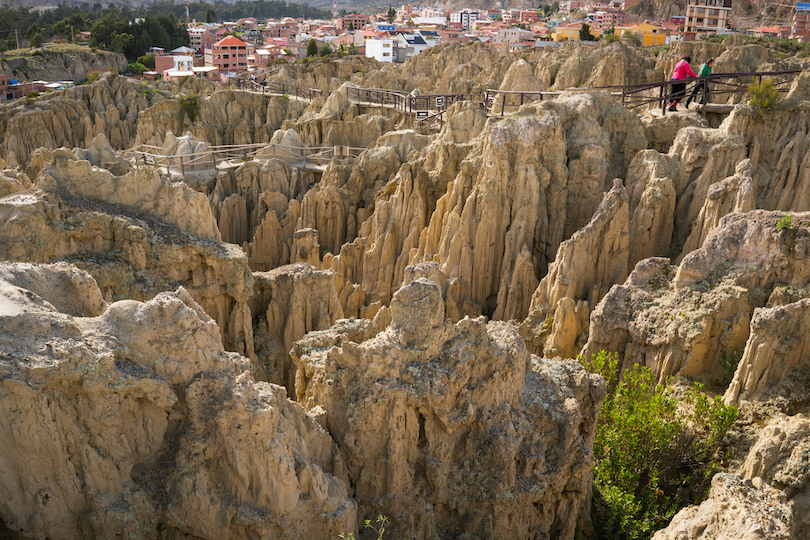
La Paz is the door to many unforgettable outdoor adventures. One of those is the Valley of the Moon. More a maze than a valley, this epic landscape boasts lengthy, narrow canyons where giant clay spires attempt to reach for the skies.
The name comes from the sensation of exploring this place. It’s eerie and otherworldly. It may just be the closest one can come to walking on the moon itself.
Such is the world around La Paz, it’s handy to have a guide. But the Valley of the Moon is easy to explore and the rewards are just as rich. Just keep your camera close.
11. Madidi National Park
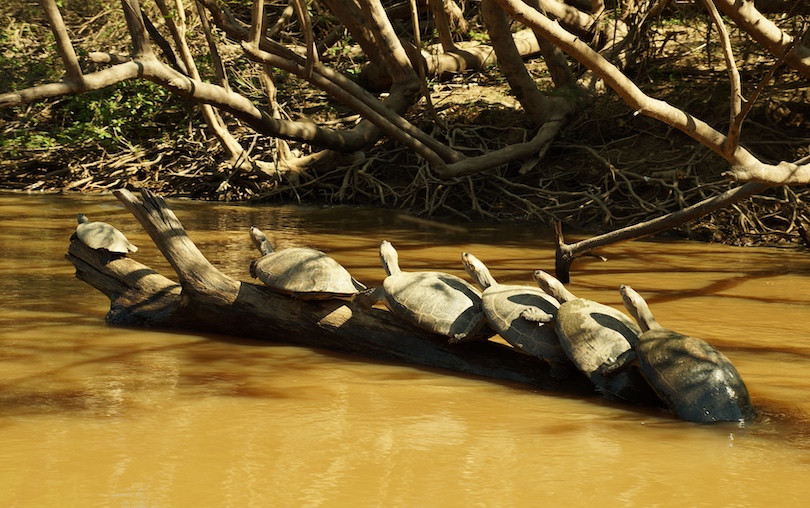
Beginning in the deep valleys of the Bolivian Amazon and rushing to the peaks of the Andean highlands, Madidi National Park is the definition of biodiversity. Constantly changing habitats welcome you wherever you go and no hour is like the last.
Most travelers choose to begin their Madidi adventure at Rurrenabaque. This is the gateway to the Amazon. Within the nearby valleys are pink river dolphins, the world’s most complex bird and insect habitats where jaguars linger but are rarely seen.
Tours take you deep into the park, with higher alpines bringing a quick change in nature. Eco lodges provide nightly accommodation, bringing epic views to your doorstep.
10. Jesuit Missions of Chiquitos
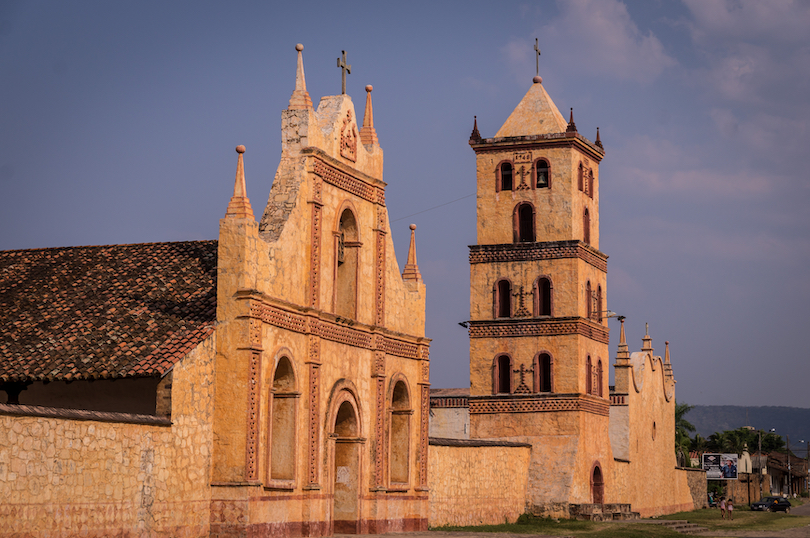
In Chiquitania, the footprint of Bolivia’s colonial past looms large. The Jesuit Missions of Chiquitos dot the map through this region in small and large towns alike. The devout and travelers mix in to admire the intricate facades that boast Spanish Baroque styles.
Splashed with golden accents and embellished wood carvings, these missions are captivating. They tell the tales of mass conversion and the often successful efforts of the Spanish to completely change a culture.
Some of the best missions include Concepcion, built in the 1700s. However, it’s the indigenous art that adorns the walls that makes it most memorable. Other villages such as Santa Ana have their own, smaller churches, creating a breadth of living history.
9. Yungas Road
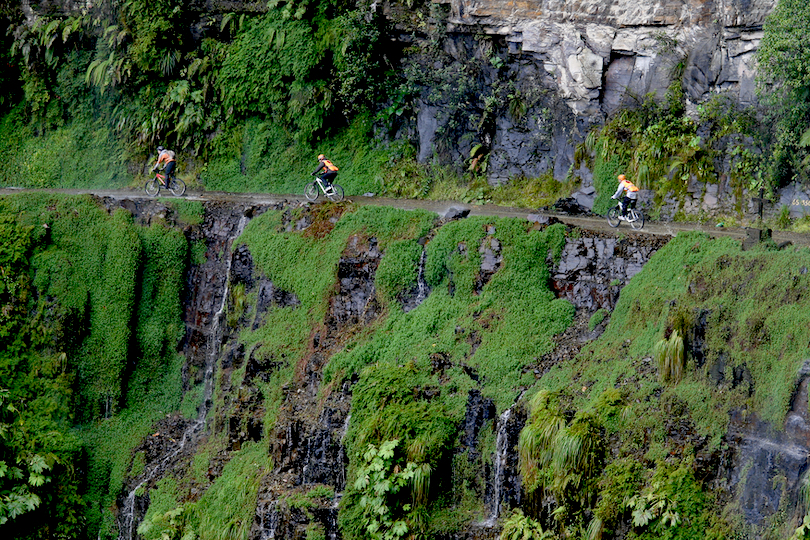
More infamously known as the Death Road, Yungas Road is not for the faint of heart. However, it’s one of those unforgettable traveling experiences that you won’t soon forget.
You’ll need a little ice in your veins as this is one of the scariest things to do in Bolivia. From La Paz, you can be driven or cycle up into the mountains on a tour. The road connects you to the Bolivian Amazon, taking you on a hair-standing ride deeper into the wilderness. From there, the gravel track cuts ever closer to the edge of a cliff.
The sheer drops often measure almost 900 meters, with infamous turns receiving such names as the Devil’s Curve.
8. Reserva Eduardo Avaroa
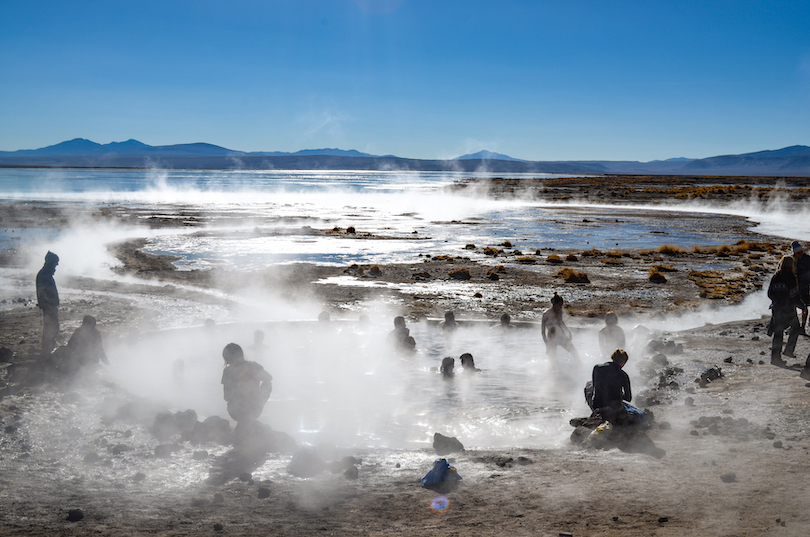
In the Sur Lipez Province, Reserva Eduardo Avaroa is one of Bolivia’s unique landscapes. You’ll be visiting this national reserve as part of your salt flats experience, but there’s so much more to this extraordinary landscape that it’s worth sticking around.
Beyond the salt flats, you can discover colorful lagoons, bizarre rock formations, ancient volcanoes, soaring geysers and majestic hot springs. It’s Yellowstone with ample South American flair.
Begin with a trek around the Laguna Colorada, whose colors change with every step, from red to blue to purple. Then check out the El Geyser, Sol de Mañana. At 4,900 meters, the cold alpine air mixes with the bubbling mud to create a mesmerizing site. Finish up with a dip in the Polques Hot Spring.
7. Take the Cable Car in La Paz
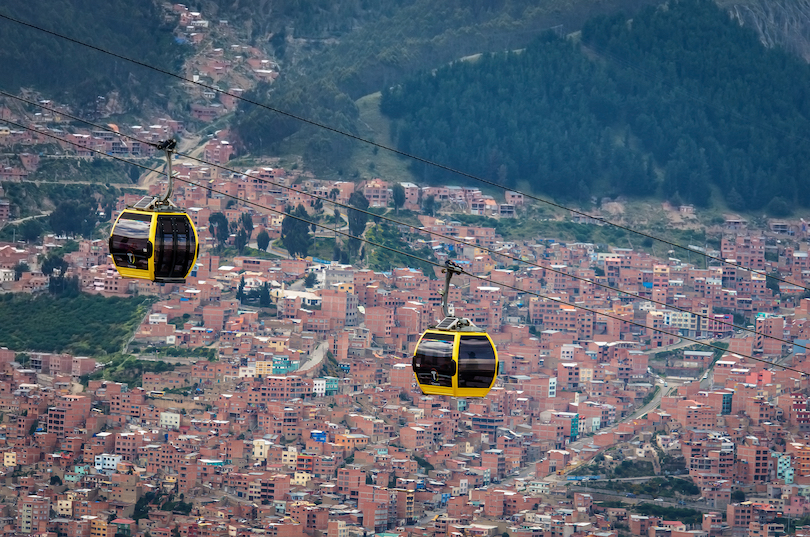
The rise and fall of La Paz’s geography has led to some forward-thinking use of public transport. There are few places on earth where a cable car is a regular part of a local’s commute. La Paz is one of them.
The city has several cable car lines that lead in different directions with different results. But each comes with a fresh perspective of the city below, her busy streets, fully enveloped by a smorgasbord of homes.
The best time to do this, however, is when the sun is shining brightly. This brings a memorable backdrop of the 6,400-meter peak of Illimani Mountain.
6. Cerro Rico, Potosi

Under Spanish occupation, Potosí became one of South America’s richest cities. Flush with the wealth of silver that came out of Cerro Rico (at the time, it was one of the world’s biggest silver mines), Potosi became a grand symbol of opulence.
But all of this wealth wasn’t without its tragedy. In fact, the peak that enveloped the mine was known as the Mountain that Eats Men. Thousands lost their lives for great wealth that inevitably made its way back to Europe.
Today, Potosí is a captivating, historic town. The wealth of yesteryear is still on display thanks to some intricate architecture and insightful museums. None more so than the fortress-like mint, Casa Nacional de la Moneda, now one of Bolivia’s best museums.
5. San Felipe de Neri Monastery, Sucre
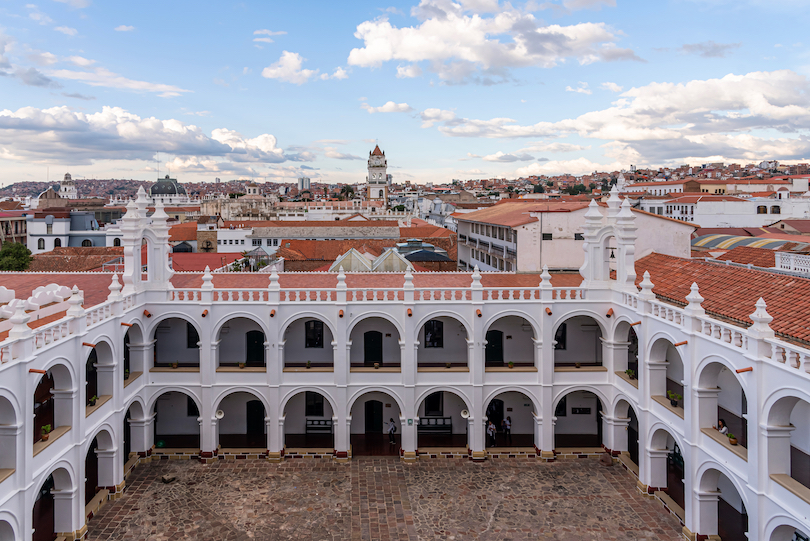
Known as the White City of the Americas, there’s no better way to take in the city’s ivory architecture than from the bell tower of San Felipe de Neri. The bright white designs are spread throughout, creating arguably the most aesthetically pleasing town in Bolivia.
But I digress, San Felipe is a striking monastery in its own right. Encased in stucco, it rises out of the old town streets as it has since the 1500s. As you wander inside, you’ll uncover a wondrous neoclassical design, with reliefs and artworks from the 18th and 19th centuries splashed throughout the halls.
You’ll then see the multi-story cloister, towering columns and pristine arches. Through the windows, you’ll see poinsettias and roses blooming, before a winding staircase takes you up to the bell tower.
4. Oruro Carnaval
Known as the Dance of the Devils, the Oruro Carnaval has stopped the local town of Oruro in its tracks for over 200 years. The town has a long connection to mining and the festival pays tribute to Virgen del Socavon, the patron saint of miners.
The festival usually takes place annually in February. Over a million people will descend on the small city, whose population will more than triple.
As the festival pre-dates Columbian times, travelers will uncover an array of ancient indigenous customs. This is mixed in with a dash of Catholicism to take you on a cultural journey that spans thousands of years.
Dancing, theatrics and an incredible atmosphere are par for course at Oruro. But be sure to see the main parade, which stretches 4km and has 30,000 musicians and dancers.
3. Lake Titicaca
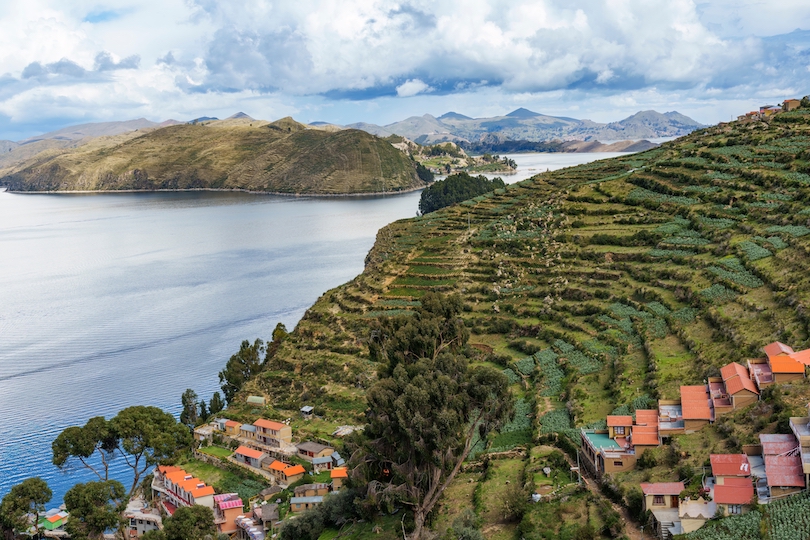
Standing at the crossroads between Bolivia and Peru is Lake Titicaca. It’s the world’s highest navigable lake, standing at over 3,800 meters. But if it wasn’t for the labored breathing of being at such high altitude, you’d be forgiven for thinking you were somewhere else.
By somewhere, we mean anywhere renowned for emerald waters and intermittent stretches of golden sand.
From the city of Copacabana, you can explore this sacred lake by venturing around her shores or taking a boat trip to Isla del Sol. This boat trip takes you to the famed floating islands that the Incas celebrated as the birthplace of the Sun. The islands feature the remnants of ancient footpaths, dotted by small ruins. It’s an ominous reminder of a great society that once walked this place.
Around the lake, the slow life is ever-present. Small, delightful fishing towns dot the map presenting Bolivia in a way few experience.
2. Tiwanaku
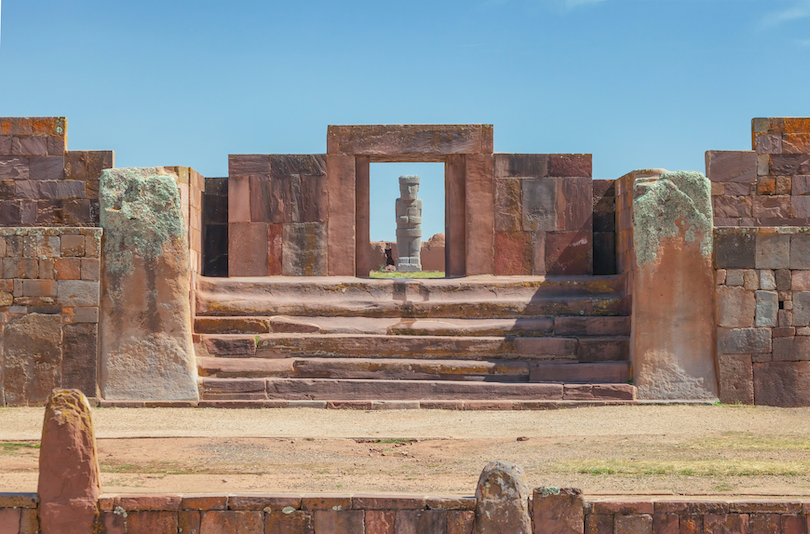
Remnants of an ancient civilization, Tiwanaku is one of the most important precursors to the Inca Empire. . It deserves a solid piece of your Bolivia itinerary, thanks to its remarkable pyramid, startling subterranean temples, several monoliths and the Gate to the Sun!
Tiwanaku dates back to the Bronze Age when the ancestors of the modern-day Aymara were at the height of their civilization. Much of it lies in ruins today, but it’s more than enough to paint a picture of what would have been an enormous complex.
Potentially, up to 20,000 people lived at Tiwanaku at its zenith. They made use of the Gate of the Sun, which allowed them to keep a relatively accurate calendar. From there, you can explore dozens of megalithic blocks that showcase their ingenuity.
While only a small part has been excavated, Tiahuanaco represents the greatest megalithic architectural achievement of pre-Inca South America. Today it is one of the top tourist attractions in Bolivia.
1. Salar de Uyuni
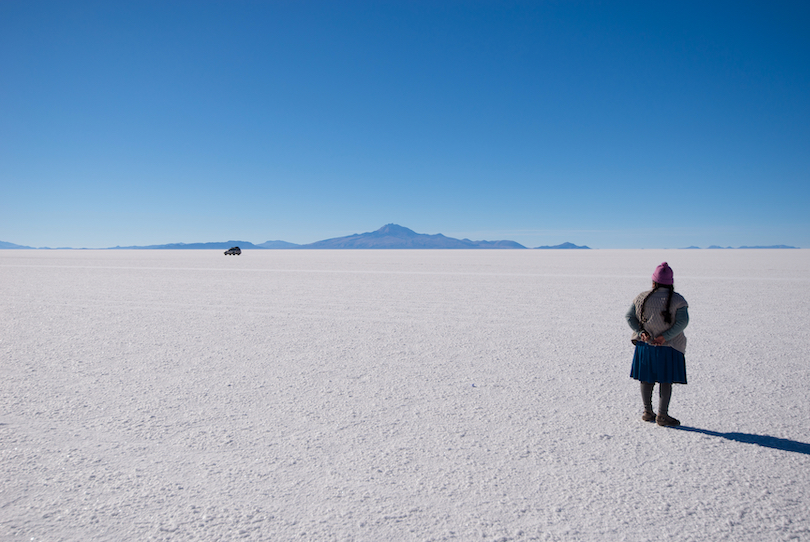
The mind-bending salt flats, Salar de Uyuni, have long bewildered travelers from around the world. The natural optical illusion of the flats transforms Salar de Uyuni from a spectacular destination in its own right to so much more.
Adventurous travelers can venture out into this wide open space. Such is the distance from horizon to horizon that it’s easy to lose your sense of place and get lost. But by keeping your wits, you’ll have an amazing opportunity to take some of the best photos of your time in Bolivia.
If you’re lucky, you may even arrive right after the rain. At this time, Salar de Uyuni transforms into a giant mirror. Rain, hail, or shine, however, stay for some of the best dark skies in South America.

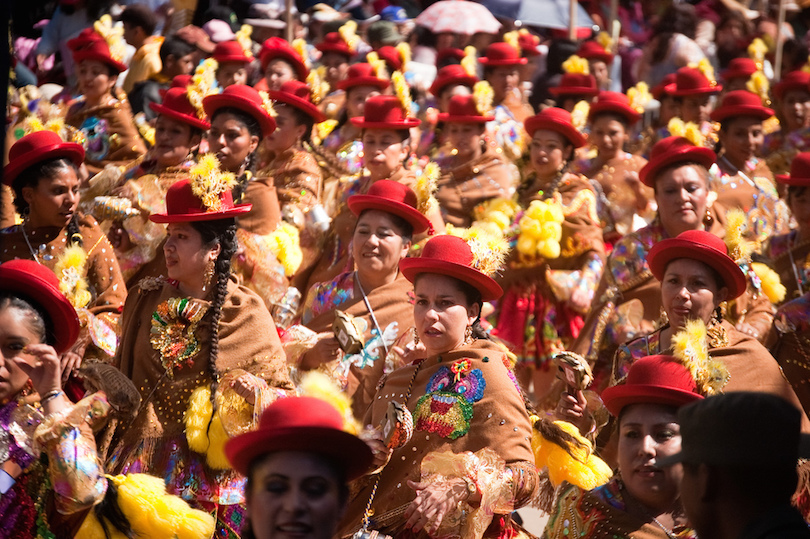
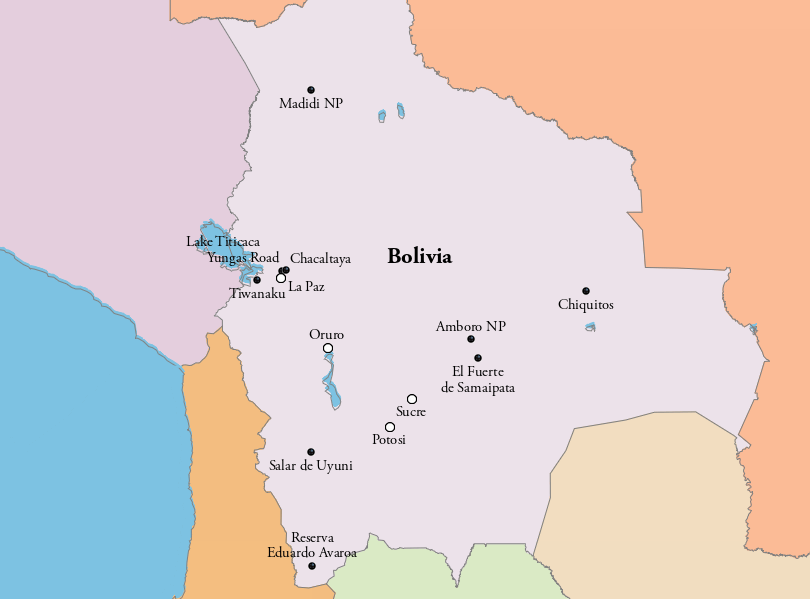
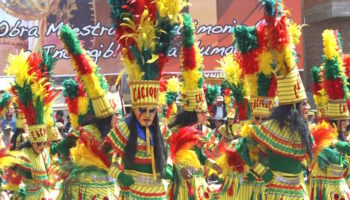
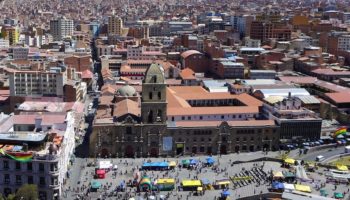
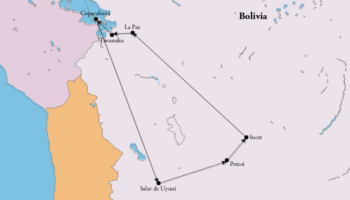
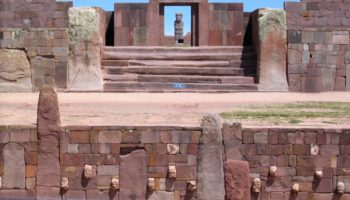
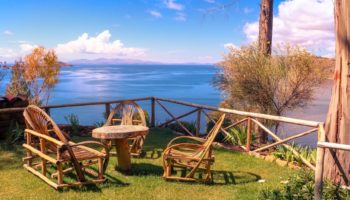



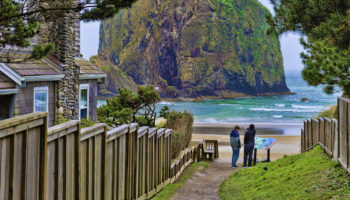

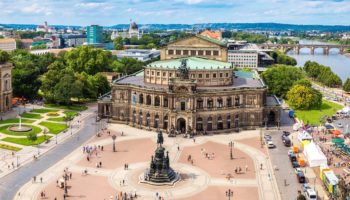
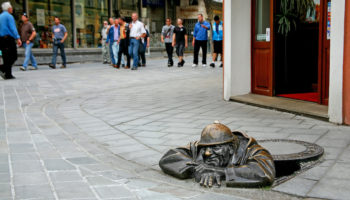
it missed christo de concordia
I can’t even believe that salar de Uyun even exists, I mean it looks like heaven
Wow yungas road.. So fascinating.. Hope to visit someday
Wow!! How magnificent is this? I hope one day I will have the great pleasure of visiting some of these stunning places. What an experience! Thanks for sharing such wonderful places.
Have a great day,
Bye.
Nice list but I believe you missed a lot of other attractions that most people don’t know about
My person list would be the following
1 Madidi National Park
2 Noel Kempff National Park
3 Salar de Uyuni plus Eduaro Avaroa National Park
4 Amboro National Park / Southern Side
5 Chiquitania Region ie Santiago de Chiquitos
6 La Paz
7 Sajama
8 Kaa Iya National Park / Jaguars
9 Samaipata and surroundings
10 Lake Titicaca
salar de uyuni………………..wow….just took my breath away..
i hope some day i can come to bolivia and visit all these amazing places
Very proud of my country. It is a wonderful place to visit.
Really great list! I love the diversity of Bolivia…varying landscapes and cultures, it’s such a fascinating country to visit. I’m living in Sucre at the moment and cannot believe such a beautiful place can be so ridiculously cheap to live!
Any advice on getting around the country to the various sites? Rental car? How is the bus system? Railroad? How Is the safety; is a sole traveler fromt he USA safe travelling around Bolivia? Seems like a great place to visit.